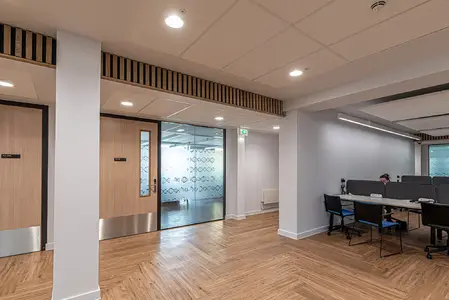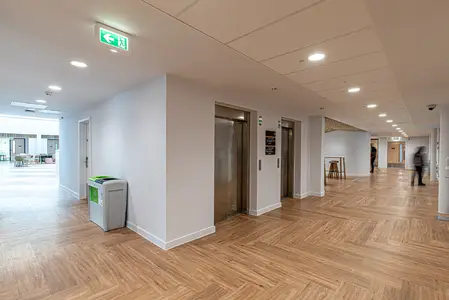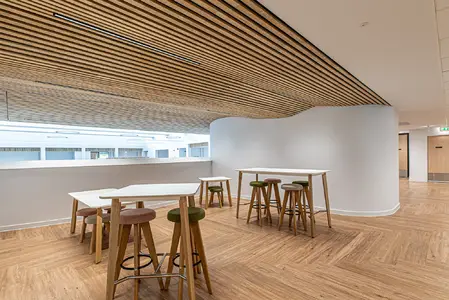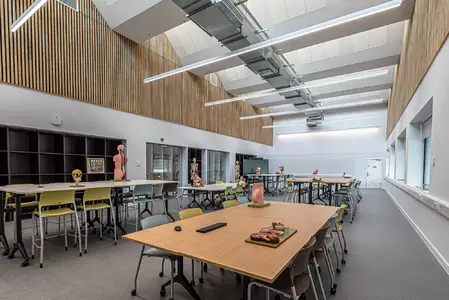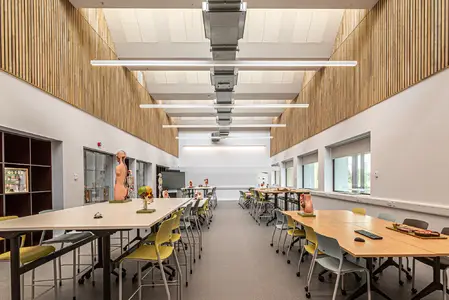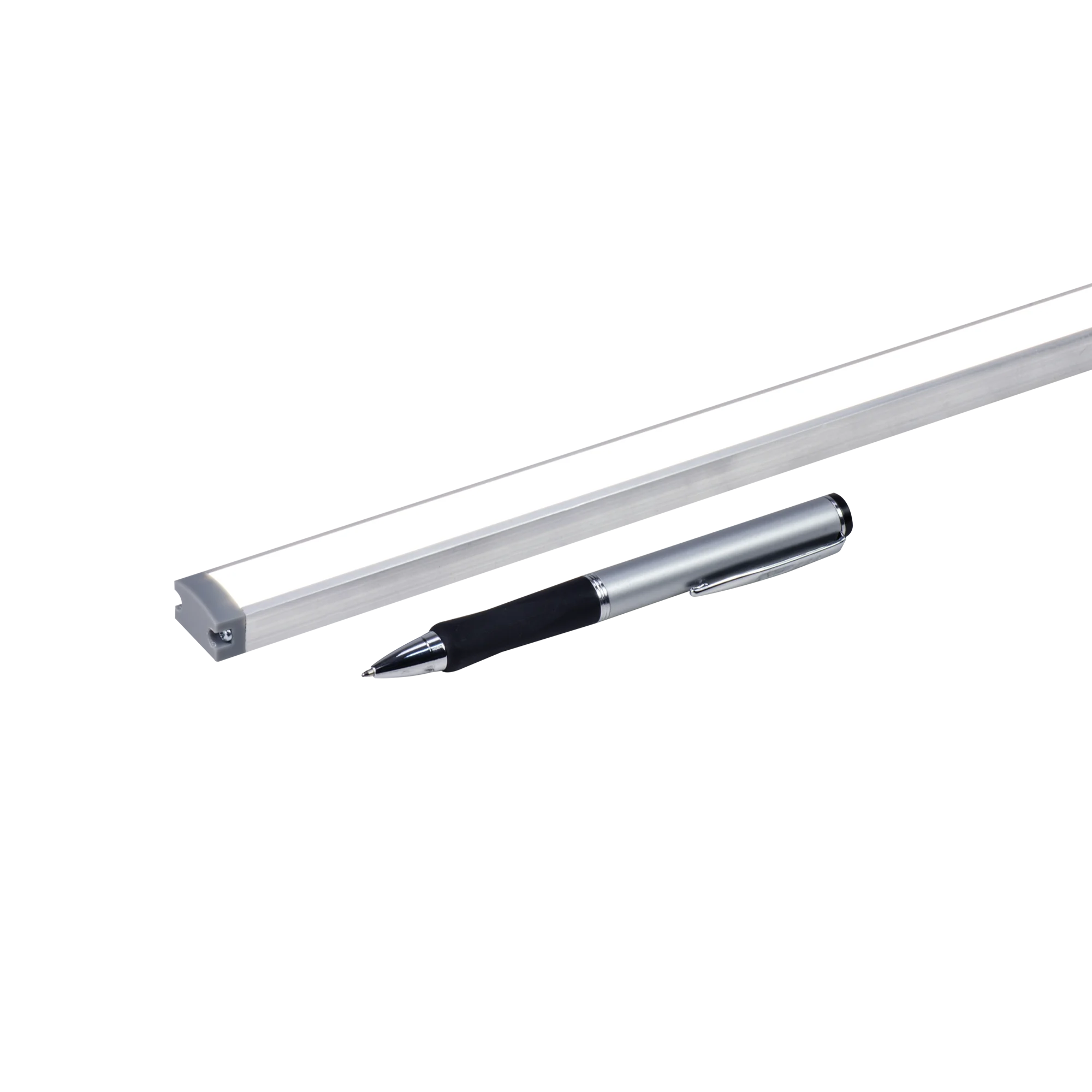Berrows House, University of Worcester
Worcester, United Kingdom
Following extensive redevelopment work, the former Berrows House in Worcester, UK, has been transformed into a state-of-the-art healthcare education facility with Thorlux SmartScan luminaires throughout.
Berrows House was built in 1965 as the offices of local newspapers the Worcester News, Evesham Journal and Malvern Gazette. The Brutalist-styled building was home to the newsrooms until 2020 when the University of Worcester purchased the site.
Extensive internal and external renovations were required to make the building suitable to serve as an ‘inclusive and inspiring’ higher education facility in the 21st century. Parts of the original building were demolished and replaced with a new, metal-framed structure.
Now clad in eye-catching golden copper, Berrows House, which has been renamed the Elizabeth Garrett Anderson Building after the first woman in Britain to qualify as a surgeon, houses an anatomy laboratory, GP simulation rooms, offices, break-out spaces, a café, and teaching rooms.
Low or zero-carbon technologies have been used in line with the university’s environmental and sustainability policies, achieving the RICS SKA Gold environmental accreditation for refurbished buildings. The building has also been awarded an EPC ‘A’ rating, indicating it has achieved the best possible energy efficiency.
Applications Covered:
The Challenge
In its brief to developers, the university said: ‘Flexibility is key; the ability to repurpose rooms easily is essential to meet the ever-changing demands placed on a university estate. The university expects the redevelopment of Berrows House to be […] high quality, practical, fully accessible and sustainable.’
The Solution
To this end, the building is now equipped throughout with highly-efficient Thorlux LED luminaires and the award-winning SmartScan lighting control system.
SmartScan uses wireless mesh technology to replace wired signals between luminaires. Secure radio communications on an 868 MHz frequency provide an excellent transmission range, with each luminaire acting as a wireless repeater node. This provides a robust communication system. SmartScan luminaires link to a Gateway unit which collects and uploads their status information; this enables building managers to monitor energy consumption, schedule emergency testing and more through the web platform.
The intelligent SmartScan lighting controls allow for setting different ‘scenes’ in a room; this facilitates the university’s goal of making the new building’s spaces easy to reconfigure and repurpose. Using a portable SmartScan programmer, site management staff can re-programme the fittings themselves for even greater flexibility. This avoids costly engineer call-out fees.
The ambitious Thorlux carbon-offsetting scheme also serves the university’s environmental targets. This helps compensate for the carbon dioxide (CO₂) released into the atmosphere because of factory and selling activities by Thorlux and from customers’ use of luminaires. Thorlux has planted 179,412 trees at a site in Wales since 2009, sequestering more than 44,385 tonnes of CO₂e over a period of one hundred years.
Opening its doors in spring 2023, the revitalised Elizabeth Garrett Anderson Building now sets the gold standard for modern, sustainable education facilities.

The creation of the new Elizabeth Garrett Anderson Building at the University of Worcester will provide an outstanding space for our healthcare and medical students, amongst others, for many years.
We set the designers and contractors (including Thorlux) challenging targets including EPC A, SKA Gold and Social Value targets.
It has been a pleasure to work so collaboratively on such a fantastic scheme with a highly committed and skilled team of people.
Mark Evans
Assistant Director (Estates), University of Worcester
